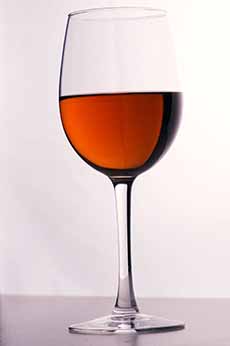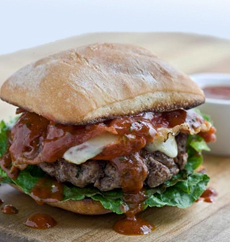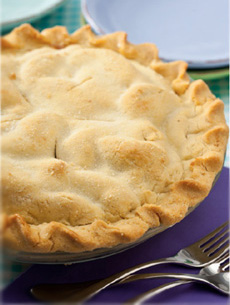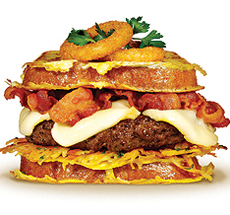|

[1] Kir Royale: sparkling wine and crème de cassis, which is blackcurrant liqueur (photo © The Mercury | Atlanta (now closed, alas).

[2] The original Kir, simply crème de cassis and white wine, has no bubbly. It begat the Kir Royale (with Champagne, above) and a dozen more variations (photo © Stuart Webster | Wikipedia).

[3] Crème de Cassis is a blackcurrant liqueur made with blackcurrants grown near Dijon, the main town in the Burgundy region of France, where the liqueur was invented (photo © Bols).
|
|
If you open a bottle of sparkling wine and find it’s not to your liking, there’s no need to drink bitter or too-dry bubbly. Think of the Kir, a French cocktail of crème de cassis—blackcurrant liqueur—and white wine.
Add a bit of crème de cassis to the bubbly, and you’ve created the luscious sparkling drink known as Kir Royale.
Pour an inch of the liqueur into a flute or other wine glass, then add the sparkling wine. You can use this recipe to turn any still or sparkling white wine into a festive party drink. For a more intense flavor, add more liqueur.
The drink was named after Félix Kir (1876-1968), a mayor of the city of Dijon in Burgundy (the same city of mustard fame). As an apéritif, he added a splash of cassis to Aligote, a local still white wine. The “Kir,” as it was known, became very popular and led to the creation of the Kir Royale, substituting Champagne for still wine.
In addition to the Kir Royale made with crème de cassis and Champagne, the drink has evolved into some 18 delicious versions, including:
Kir Imperiale, using crème de framboise (raspberry liqueur) instead of creme de cassis, plus Champagne (or other sparkling wine). Here’s the recipe.
Kir Royale à la Pêche, made with crème de pêche (peach liqueur).
Kir Royale à la Mûre, with crème de mure (blackcurrant liqueur).
THE OTHER “KNOWN” KIR VARIATIONS
Cidre Royal, made with hard cider and Calvados (apple brandy) instead of wine, plus crème de cassis.
Communard or Cardinal, made with still red wine instead of white wine.
Hibiscus Royal, made with sparkling wine, peach liqueur, raspberry liqueur, and an edible hibiscus flower.
Kir Berrichon, from the Berry département in central France, made with red wine and blackberry liqueur (crème de mûre).
Kir Bourgogne, made with red wine.
Kir Breton, made with Breton cider instead of wine.
Kir Normand, made in Normandy, with regular or sparkling cider as the wine and the local Calvados (apple brandy) instead of liqueur.
Kir Pamplemousse, made with red grapefruit liqueur and sparkling white wine.
Kir Pêche, made with white wine and peach liqueur.
Kir Pétillant, made with any sparkling wine (as opposed to the original Champagne.
Kir Royale à la Lavande, made with crème de lavande (lavender liqueur).
Kir Royale à la Violette, made with crème de violette (violet liqueur).
Pink Russian, made with milk and cassis—no wine!
Tarantino or Kir-Beer, made with lager or light ale.
HOW ABOUT AN ALL-KIR COMPETITION?
We’ve long had a fantasy of trying all of these creations at one event. It would probably have to be a three-day event, with half the recipes tried and ranked on Day 1, and half on Day 2.
The “finalists” from both days would compete on Day 3, with the winners chosen—and then a restful sleep for all!
In reality, you can just offer a few options, using the liqueurs you have.
|






